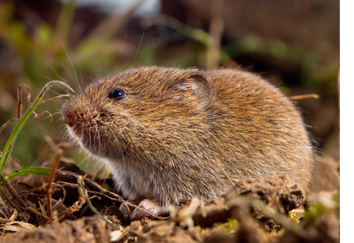Vole Grass Damage Solutions: Effective Control Approaches
Wiki Article
Grasping Vole Bug Control: In-depth Insights on Problem Prevention and Therapy Approaches
By recognizing the subtle signs of vole infestation early on, we can take positive measures to stop extensive damages. In this conversation, we will explore the subtleties of vole behavior, dive into the recognition of infestation indications, and discover the most efficient avoidance and treatment approaches.Understanding Vole Actions
Checking out the foraging patterns of voles uses important insights into their behavior and habitat preferences. Voles, tiny rats resembling mice, are herbivores understood for their below ground tunneling activities. By observing their foraging habits, scientists can obtain a better understanding of where voles favor to establish their environments and the extent of their environmental effect. Voles are respected breeders, with a single female with the ability of generating a number of trashes in a year, making it vital to understand their behavior for efficient parasite control strategies.Research indicates that voles exhibit careful feeding practices, liking seeds, roots, and origins. This nutritional choice affects their foraging patterns, leading them to locations abundant in plant life and ground cover. In addition, voles are known to create fancy tunnel systems for foraging and nesting functions, suggesting a high degree of flexibility to their environments.
Recognizing vole actions is vital for carrying out targeted bug control actions that interrupt their habitat choices and foraging tasks (vole yard damage). By researching their behavior, specialists can develop much more effective prevention and therapy methods to handle vole infestations

Identifying Indicators of Vole Problem
Vole infestations can be discovered by recognizing details signs of their existence in a location. One of the most common indicators of a vole problem is the visibility of surface paths.One more essential indicator of vole problem is the existence of small burrow openings in the ground. Voles dig superficial burrow systems with multiple entrances and departures. These burrows act as sanctuary and nesting websites for the voles. Additionally, voles are known to leave chewed plant stems, roots, and light bulbs near their burrow openings, indicating their feeding activity in the location.
Furthermore, vole droppings can likewise indicate their presence. Vole droppings are small, brown, and cylindrical fit, appearing like grains of rice. Discovering these droppings along paths or near burrow openings can verify a vole infestation. By being vigilant for these indicators, building owners can promptly resolve vole invasions and protect against further damage.
Carrying Out Aggressive Avoidance Measures

In addition, employing all-natural vole deterrents like castor oil-based repellents or killer urine can work as efficient preventative steps. It is additionally recommended to consistently examine exterior rooms for any type of indicators of vole activity, such as runways or tunnel openings, to resolve prospective invasions without delay. vole lawn damage. By taking on these proactive prevention techniques, homeowner can significantly decrease the chance of vole damage and maintain the health and wellness and aesthetics of their landscapes
Reliable Treatment Methods
Including targeted trapping methods and utilizing approved rodenticides are necessary parts of reliable treatment methods for taking care of vole problems. Capturing can be an efficient way to reduce vole populations, especially when placed strategically in their active runways. Snap traps and live traps can both work, with the latter enabling the capture and relocation of voles. When using rodenticides, it is important to comply with security guidelines to stop damage to non-target animals and family pets. Location rodenticides in protected bait stations to decrease threats to unexpected targets. Furthermore, habitat modification, such as decreasing ground cover and eliminating resources of food, can assist discourage voles from infesting an area. Normal surveillance and upkeep are likewise essential aspects of effective therapy approaches to make certain that vole populations are kept under control. By incorporating trapping, rodenticides, habitat alteration, and regular tracking, efficient vole insect control can be achieved.Monitoring and Maintenance Tips
Routine surveillance allows for the early detection of vole activity, enabling punctual treatment prior to problems get worse. To effectively monitor vole populations, tactically positioned catches can be used in vole paths or near burrow entries.Furthermore, preserving a tidy and well-kept landscape is vital in vole prevention. Cleaning away debris, such as piles of wood or thick plant life, removes possible vole environments. Consistently trimming and mowing lawns plant life aids minimize vole hiding spots and minimizes their accessibility to food resources.
Moreover, continuous maintenance of physical obstacles, such as fencings or cable mesh, is vital vole pest control to avoid vole breach. Evaluating and fixing any problems to these frameworks makes sure that vole control remains reliable in securing residential or commercial properties from invasions. By incorporating these monitoring and upkeep practices right into a detailed vole insect control strategy, people can effectively take care of vole populations and protect their buildings from damages.
Conclusion
To conclude, grasping vole parasite control needs a strong understanding of vole habits, the capability to recognize indications of problem, carrying out aggressive prevention measures, reliable treatment approaches, and constant surveillance and maintenance. By taking a thorough technique to vole control, people can efficiently take care of and prevent invasions, ultimately securing their building and surrounding atmosphere from damage triggered by these tiny rodents.In this conversation, we will certainly check out the subtleties of vole habits, dive into the recognition of problem indicators, and discover the most reliable prevention and therapy methods.Integrating targeted capturing techniques and making use of approved rodenticides are necessary components of effective treatment approaches for managing vole invasions. To successfully keep track of vole populations, tactically placed catches can be utilized in vole runways or near burrow entryways. Evaluating and fixing any damages to these structures guarantees that vole control stays reliable in protecting buildings from infestations. By incorporating these monitoring and maintenance practices into a detailed vole pest control plan, individuals can properly manage vole populations and secure their buildings from damages.
Report this wiki page